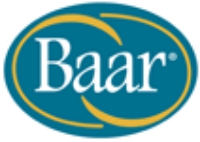Breast cancer is a complex and devastating disease and the most frequently diagnosed cancer in American women. Breast cancer may occur in men as well as women, but is much more common in women. Almost 300,000 new cases of breast cancer (in situ and invasive) were diagnosed in the United States in 2013, and around 40,000 people died. Breast cancer has serious medical, psychological, and social consequences.
Although in many cases the cause of breast cancer is unknown, breast cancer incidence rates appear to be linked to the modern lifestyle. Risk factors associated with breast cancer include heredity, increasing age, early onset of menstruation, late menopause, never having had children or having a first child after age 30, and high-fat diet.
Standard medical treatment for breast cancer usually involves removal of the tumor through partial or total removal of the breast followed by local radiation and chemotherapy or hormone-blocking therapy. Social support is often helpful and can be obtained by joining a support group where members share common experiences and problems.
Treatment outcome is related to the progression of the disease. Early intervention in cases where the cancer has not spread or metastasized provides the best outcomes with a five-year survival rate of about 85%. For patients with extensive spread of the cancer, the five-year survival rate is about 10%. Early detection and intervention are extremely important. Even with aggressive and appropriate treatments, breast cancer often metastasizes to distant sites such as the lungs, liver, and bones.
THE CAYCE READINGS' PERSPECTIVE OF CANCER
Edgar Cayce gave many readings for persons suffering from a wide variety of cancerous conditions. Key points about cancer from the Cayce health readings:
- CANCER IS AN ENTITY UNTO ITSELF. In most cases, cancer is a group of cells or tissues which separates ("segregates") itself and forms its own entity within the larger system of the body.
- CANCER REPRESENTS A FAILURE OF NATURAL PROCESSES. The readings mention that the same processes that result in cancer are present in the body all the time. Cancer usually results from the failure of natural processes such as coagulation and elimination of wastes.
- CANCER DRAWS FROM THE VITALITY OF THE BODY. Cancer uses the body's life-force energy to survive. Cancer growth is a drain upon the resources of the host.
- CANCER HAS MANY CAUSES.There are many etiological (causative) factors associated with cancer. Heredity, environmental toxicity, poor eliminations, injury, lack of vitality, and depleted immune system were the most often cited factors linked to cancer. Specifically, chronic irritation was often described as a contributing factor to producing tumors which could become malignant.
- THERE ARE MANY FORMS OF CANCER. In two Cayce health readings nineteen forms of cancer were mentioned.
- CANCER CAN OFTEN BE PREVENTED. According to the readings and modern science, keeping a healthy diet and good eliminations can help prevent cancer. Gentle osteopathic treatment was also often prescribed to set up "drainages" and improve eliminations thus decreasing the chances for cancer.
-
EARLY TREATMENT RESULTS IN BETTER PROGNOSIS. In agreement with modern medicine's view of cancer treatment, the readings noted that early intervention produces better therapeutic results.
- CANCER INVOLVES MENTAL AND SPIRITUAL ASPECTS. The Cayce holistic approach to health and healing is notable in the readings he gave for persons suffering from cancer. The mental and spiritual aspects of prevention and treatment were strongly emphasized. Excessive worry and negative attitudes can make a person with a genetic predisposition for cancer more vulnerable to developing the illness. Recent research into the effects of attitude on cancer survival echoes the Cayce material.
- THE TREATMENT OF CANCER INVOLVES MANY MODALITIES. The Cayce readings recommended a wide variety of therapeutic modalities for the treatment of cancer. Treatments directed at decreasing toxicity and increasing vitality were emphasized. On the whole, natural therapies that worked with the body to heal itself were given priority.
- EDGAR CAYCE SOMETIMES RECOMMENDED SURGERY AND RADIATION. In certain cases where the cancer was progressive and extreme, surgery and/or radiation therapy were recommended. Modern chemotherapy techniques were not available during Edgar Cayce's era.
- SOME CASES OF CANCER WERE REGARDED AS INCURABLE. Although the Cayce readings were generally optimistic with regard to the body's innate ability to heal itself from almost any illness, in some cases of cancer the disease was too advanced to expect a physical cure. In such instances, the readings would recommend therapies to decrease the pain and suffering while emphasizing the mental/spiritual (soul) aspects of healing.
THE CAYCE READINGS' APPROACH TO BREAST CANCER
Edgar Cayce gave approximately 68 readings for 12 women suffering from breast cancer. In addition to this core group of breast cancer readings, a number of readings were also given for women who were experiencing breast problems such as nonmalignant tumors and soreness. The latter group of readings contain some excellent insights into the causes and prevention of breast cancer.
Recent studies have shown that cancer may be caused by various forms of chronic inflammation. This view is entirely consistent with the readings' outlook, particularly with regard to breast cancer. Numerous readings stated that various forms of chronic irritation were the source of breast cancer.
"Prenatal" factors were mentioned in several readings. Presumably, these factors would include hereditary and genetic predisposition, now known to be a risk factor in some cases of breast cancer.
The recommendation for gentle, natural therapies is a hallmark of the Cayce approach. Here is an example of the readings' approach to breast cancer. Note the reference to "prenatal" (genetic) factors which is documented by a family history of cancer.
Yes, we have the body here. This we have had before. Conditions are not so well with the body as when we last had same here. Those conditions as are prenatal in their effect, through the activity of forces made manifest in a physical body, are beginning to become in the manner of producing within the system an element as of its own resuscitation, living upon the life of the body-physical. That's a very good description of cancer, isn't it? For it is malignant in its nature, and has already attacked the mammary glands, and is going to be rather fast in its operation unless there are means taken as to check same.
--Edgar Cayce reading 2457-4
This woman was 38 years old when this reading was given. She followed the treatment recommended in her readings and was cured of her cancer. She lived for another 36 years, dying in in her sleep at the age of 74.
THE CAYCE READINGS' THERAPEUTIC APPROACH
Although Edgar Cayce gave unique readings for each individual rather than for disease categories, when viewed as a whole, certain important patterns of treatment are obvious. The most common recommendations for the treatment of breast cancer were:
- Prevent constipation and improve eliminations to decrease toxicity via strict diet, massage and osteopathic therapy, and hydrotherapy (castor oil packs and colon therapy).
- Bolster the immune system. Adequate sleep, exercise, and proper diet help the body combat tumors. One interesting specific method recommended was to use ultra-violet light therapy and animated ash to assist the system in fighting the cancer.
- Provide specific treatment to breasts as needed (topical salves and ointments);
- Increase vitality with beef juice and manual therapy.
- Create constructive attitudes and emotions by working with the Ideals Exercise.
- Consult with your physician regarding the role of surgery. Make an informed decision as to whether this is a reasonable option for you.
Keep in mind that the Cayce approach is complementary to the conventional medical approach. This means that it can be used in addition to other forms of treatment. This approach does not require you to stop other forms of treatment. Work closely with your physician in developing a treatment plan that is best for you.








